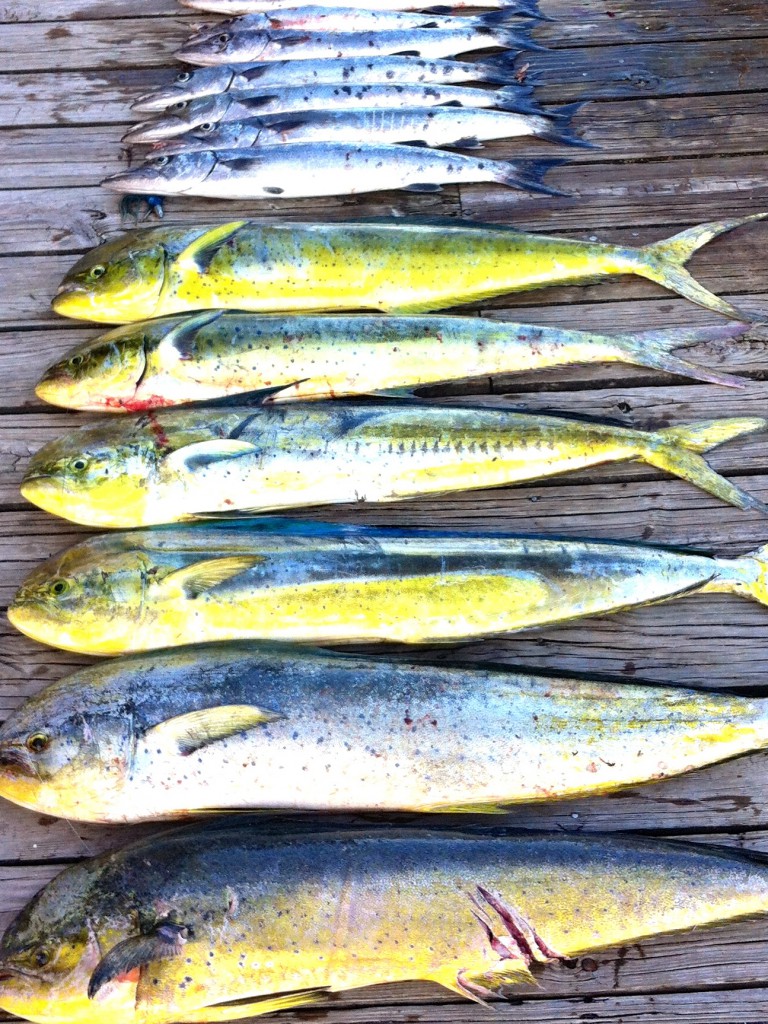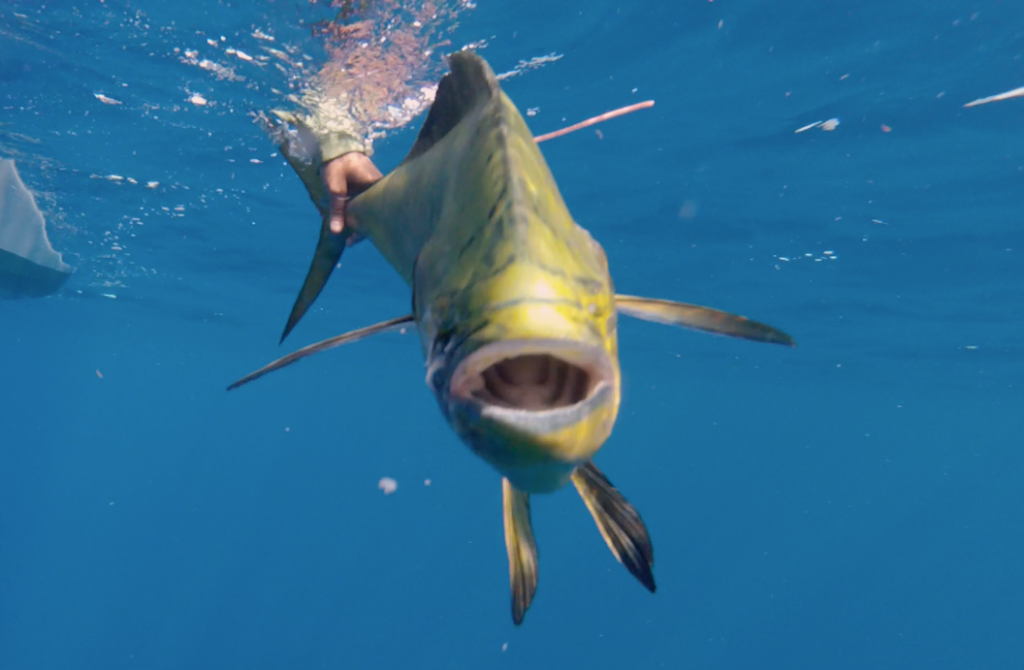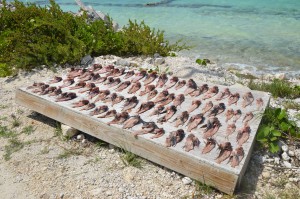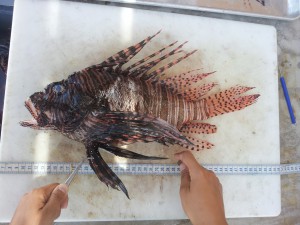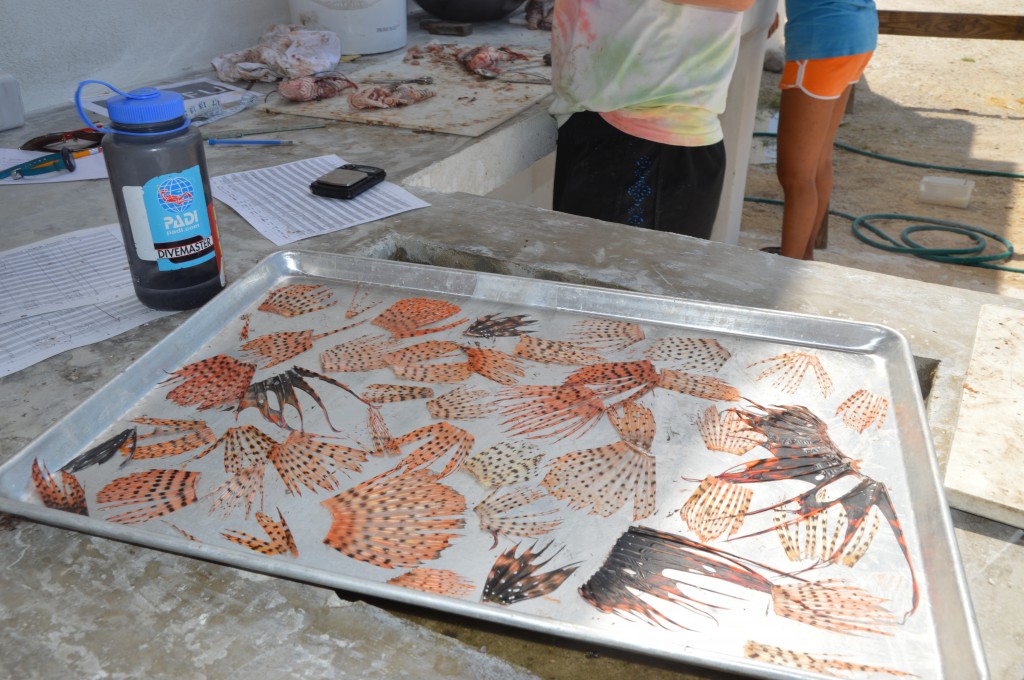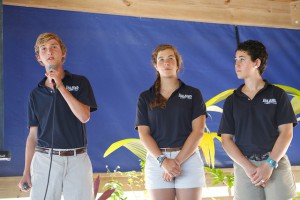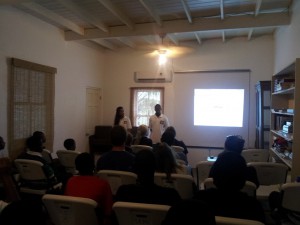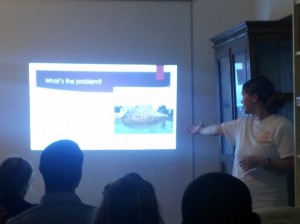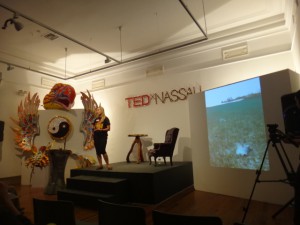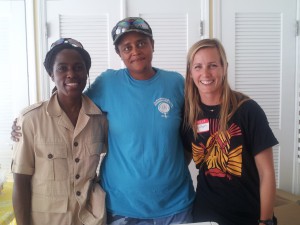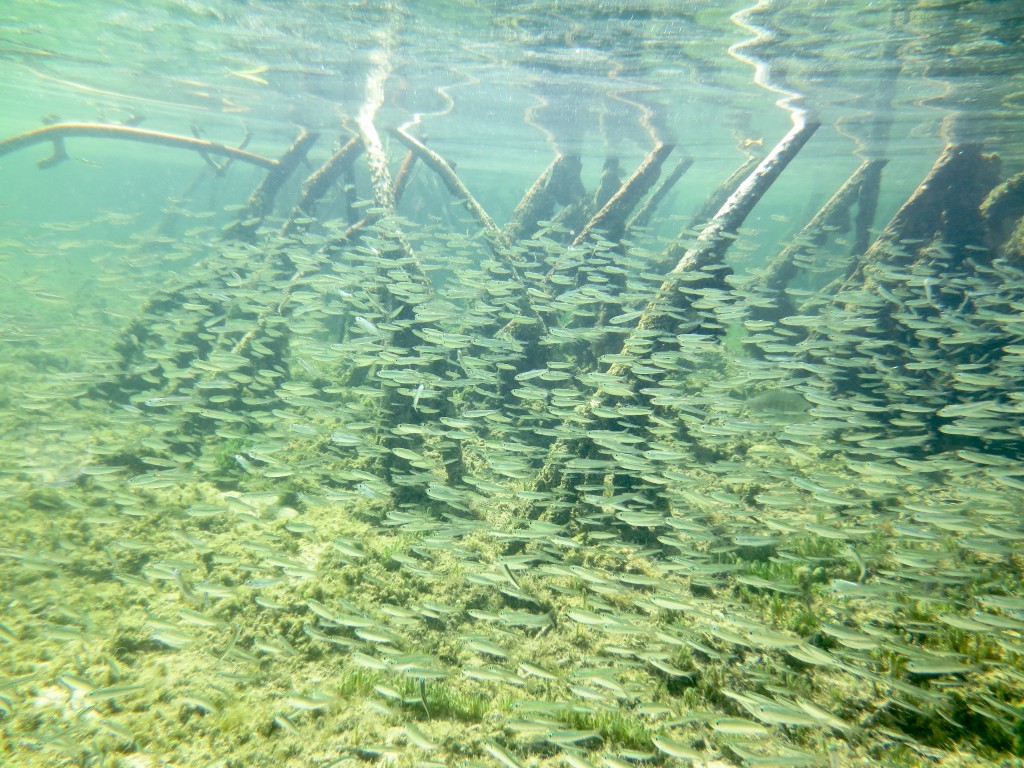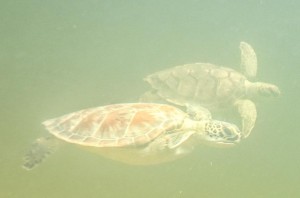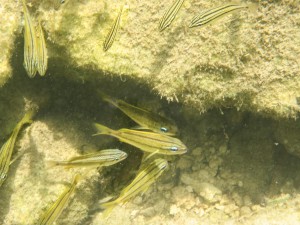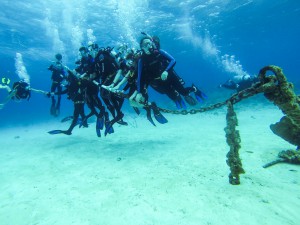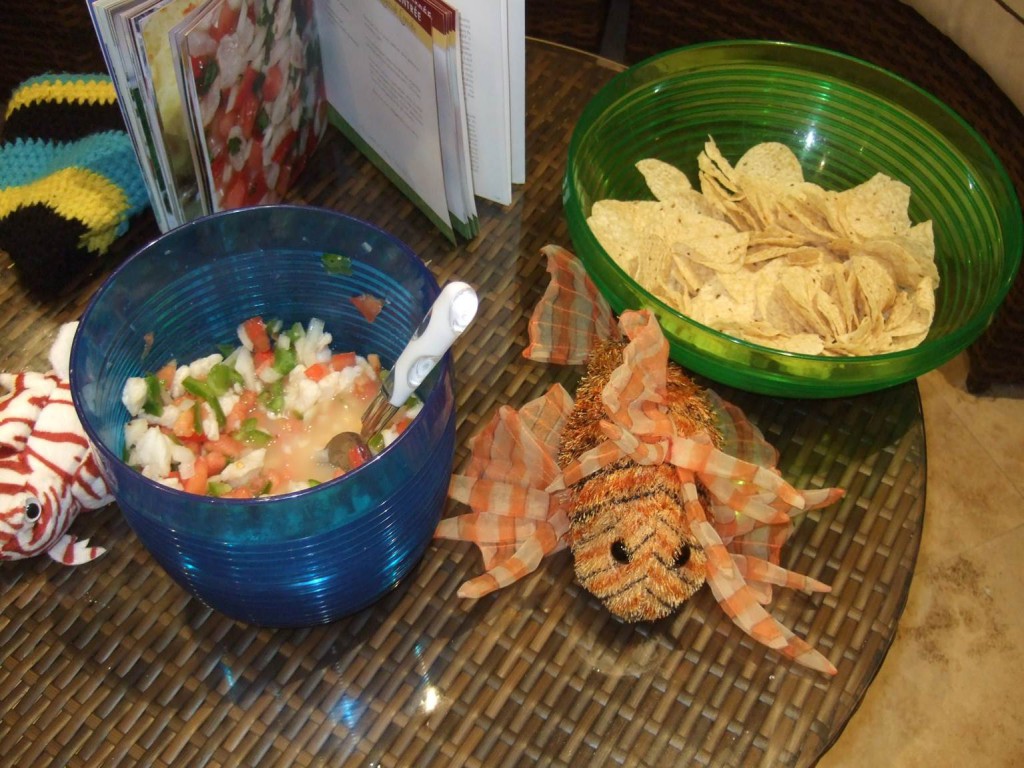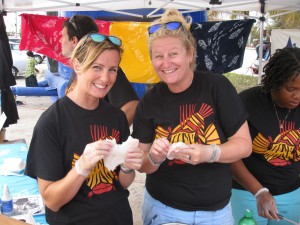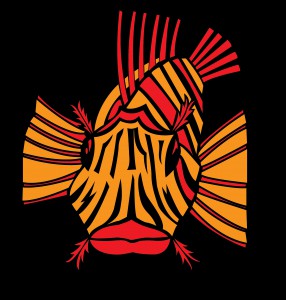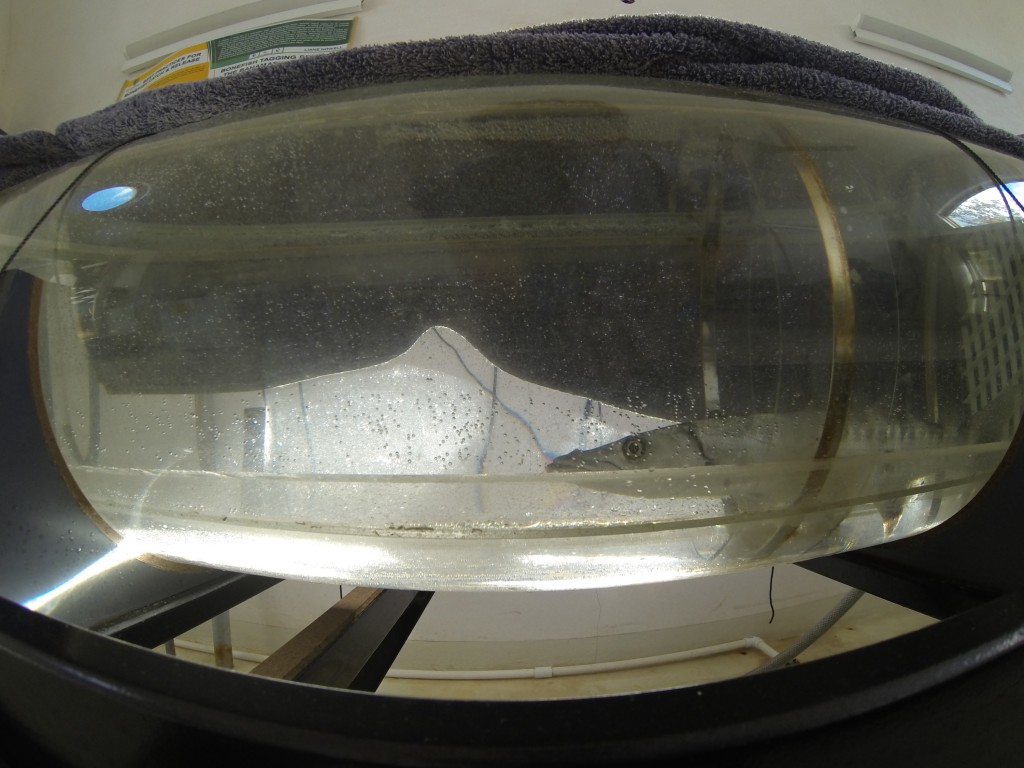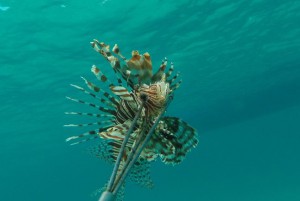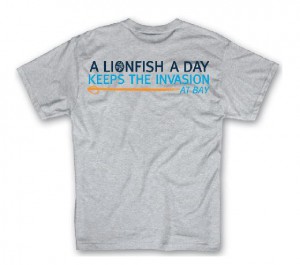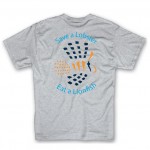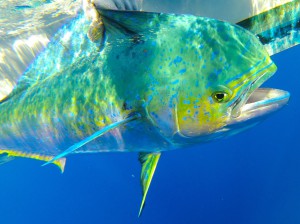
Dolphinfish (aka mahi mahi or dorado) are a highly sought after sportfish targeted by offshore anglers, and they also support commercial fisheries in the Caribbean and US. Until recently, little was understood about their movements, stock ranges, and population structure. Recent findings suggest that these fish complete long-distance migrations and are quick to mature. However, little information exists about dolphinfish movements or harvest in The Bahamas – a location identified by the South Atlantic Fisheries Management Council in critical need of further stock assessment.
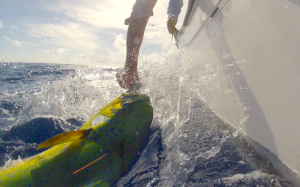
The Cape Eleuthera Institute has been working with the Cooperative Science Services’ Dolphinfish Research Program (DRP; http://www.dolphintagging.com/) to mark dolphinfish in The Bahamas with external tags (fig. 2). After recording the fish’s size and location of capture, the fish is tagged and released to be captured again by an angler or commercial fisherman. Upon recapture, essential information such as distance travelled and growth of the fish can be determined.
Recent recaptures in the Bahamas have further demonstrated both the distances travelled by dolphinfish, as well as the large geographic range of the north Atlantic stock. One fish tagged in Florida last year was recaptured 309 days off Rum Cay in the southern Bahamas. It is estimated that the fish travelled up the East Coast of the US before swimming back to the Bahamas – a total of nearly 4,000 miles (fig. 3)!
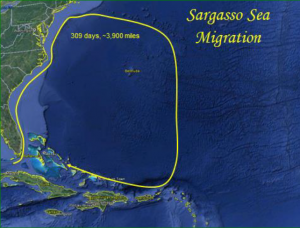
These findings are critical to protecting the Atlantic mahi fishery. By quantifying movements of dolphinfish across political boundaries (i.e., US, Bahamas, Puerto Rico, and other Caribbean nations), a regional management plan can be devised and enforced, ensuring a sustainable fishery for all countries.
If you will be fishing in the Bahamas and are interested in tagging dolphinfish, contact zachzuckerman@ceibahamas.org, or visit the DRPs website. Many anglers release small dolphinfish; tagging is a great way to contribute to our increasing knowledge of this economically important species!
